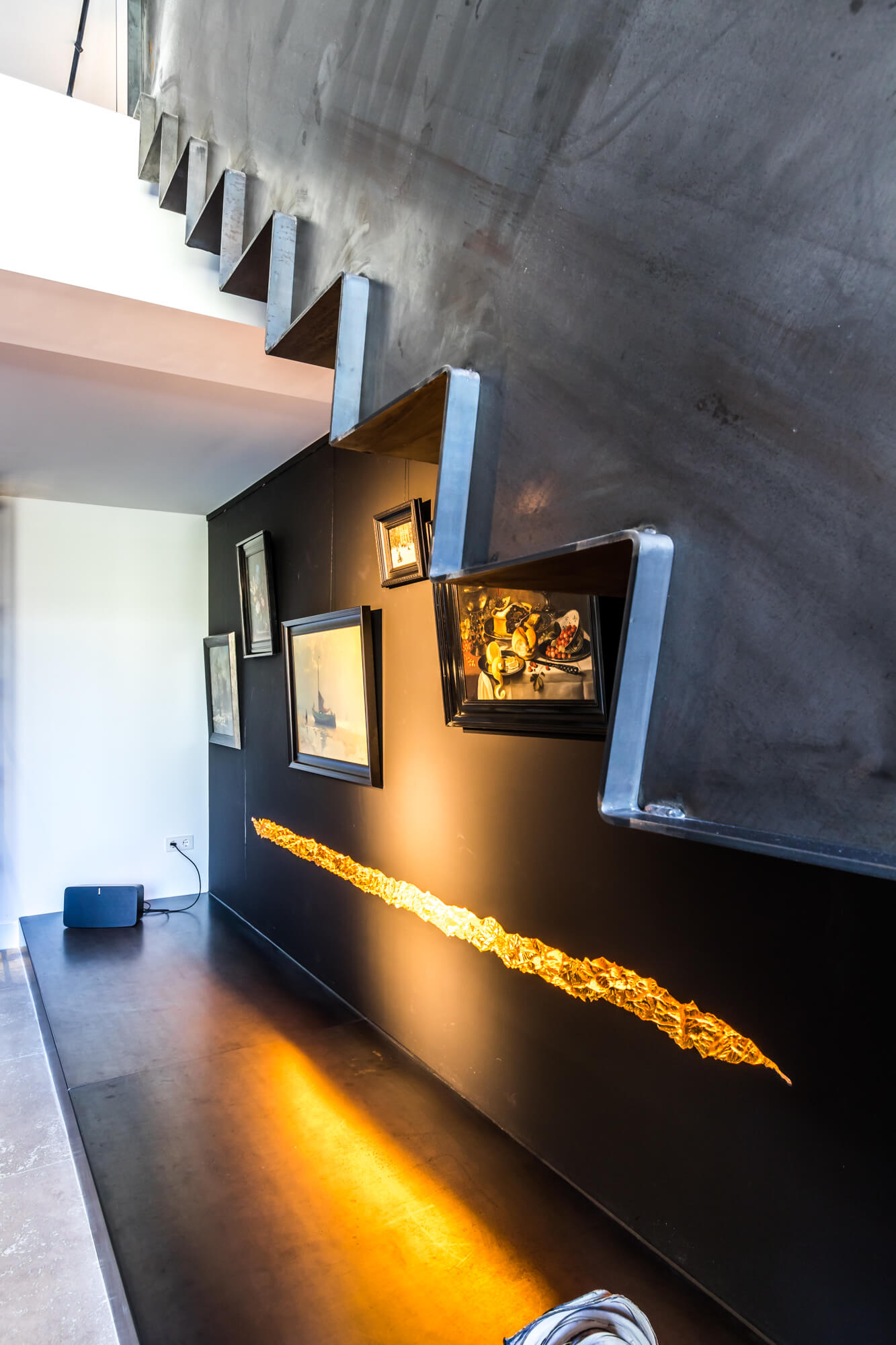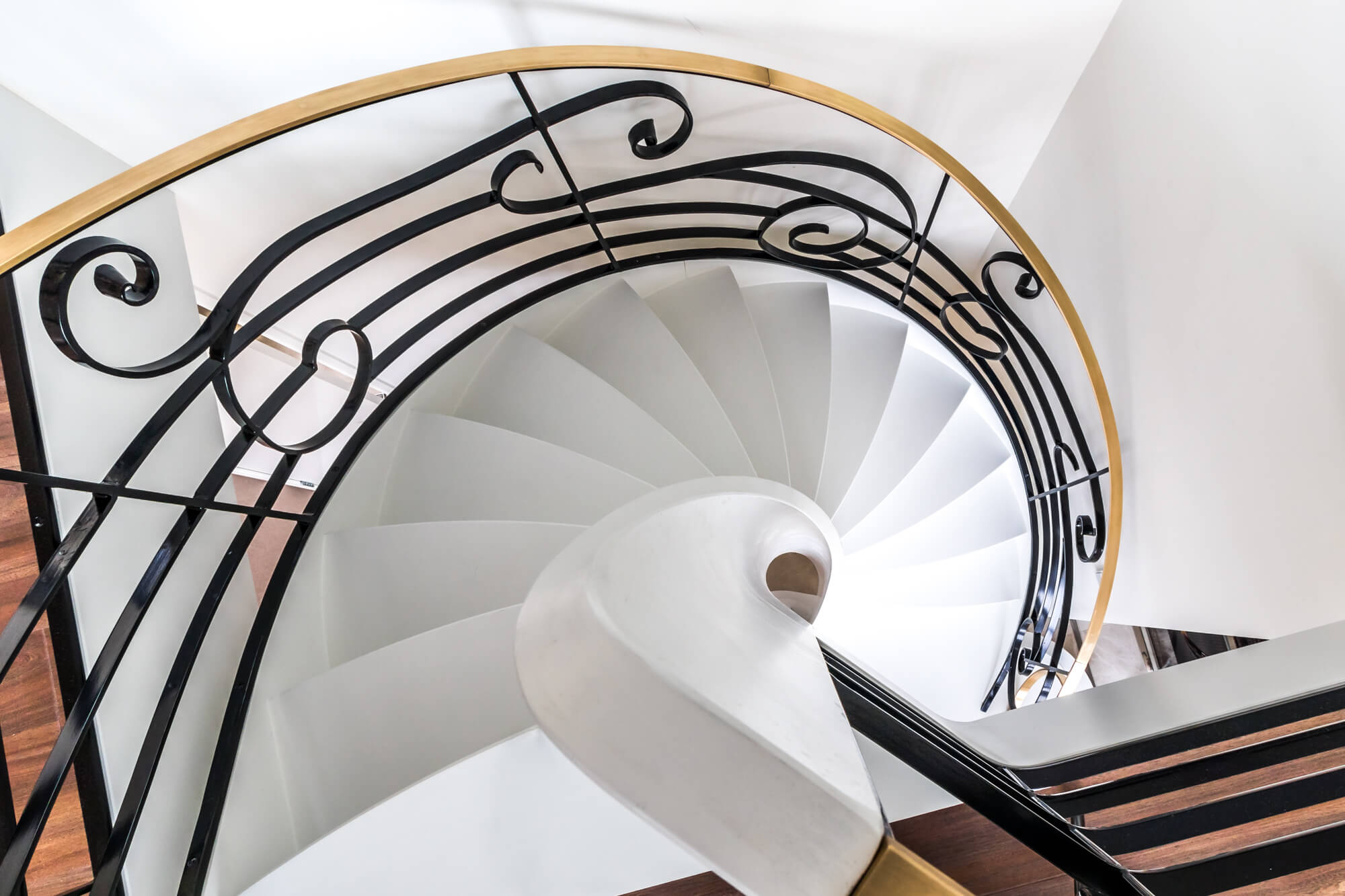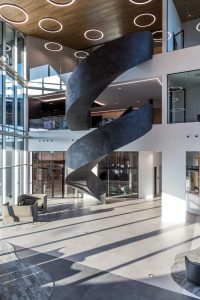Steel is actually ideal. It is one of the most durable materials we can use to make a staircase. Because steel has the beautiful quality that it does not wear and can be re-used. We can do a lot with this industrial material, therefore steel can be found in many of our stairs designs. From helix stairs, straight or quarter to a striking steel cross combination.





See all our steel stair projects >
Steel is hot and happening. It is a characteristic part of many interior design; from small details like a steel door to ceiling high bookcases, stairs and fireplaces. The combination of a more natural materials such as wood, makes for a nice contrast. A steel staircase creates a modern, quirky appearance with minimal means. Combined with glass it looks all tight and finished like this (see picture below) house in Amsterdam.
But steel can also be used subtly in a stair design, to create a handrail or balustrade. Because it is a very strong material, it can be used slim. For example, think of steel, floating steps or the fences of a balustrade or handrail. Other metals we use for this purpose are stainless steel (stainless steel) and aluminum.

One of our biggest challenges was the steel helix staircase (see picture below) which consists of two huge round-rolled blue-steel plates. Blue steel is known in the interior design because of its beautiful blue-ish glow. On top of this steel lies a layer – called the skin – which only occurs after high-temperature rolling. The color is never completely influenced, because it occurs during the production process. So it can range from deep dark blue to black. Because of this “whimsical” character, we find it a sublime and pure metal to work with.

A few of our steel creations:





